A railway viaduct is being built through the heart of London’s bustling Borough Market and in two weeks its new bridge will be a major landmark. All that remains is to move it to the right place
Passengers travelling west from London Bridge station currently enjoy observing, from the train, an exercise in how to thread a big, heavy railway viaduct through a maze of crumbling old Victorian buildings. Over one section of this viaduct workers are busily building an enormous structure that is as high as the viaduct again. This is a bridge that will span a major road separating the end of the viaduct and London Bridge station. The crowning part of this spectacle occurs in two weeks’ time when the bridge will be rolled along the viaduct and launched out over the void to complete the missing link in the chain.
This work is a crucial part of the £6bn Thameslink programme that will greatly increase the number and capacity of trains running north to south through the heart of London. The work includes upgrading stations along the route, including major rebuilding work at London Bridge station. In financial terms, the £100m viaduct and bridge works is a just a tiny piece in a very big jigsaw but is essential to the whole project. There are just two railway lines outside London Bridge station, carrying all the traffic in and out of Charing Cross, and Thameslink trains to Kings Cross and beyond. This job will add another two lines. “We are doubling capacity from a two-lane highway to a four-lane highway,” says Graeme Campbell, senior programme manager for Network Rail. “At the moment if there is any disruption here it backs up all the way into Kent.”
Despite its relatively small size, this job has proved to be very challenging. The viaduct goes right through the centre of foodie paradise Borough Market, which is swarming with tourists and locals. The market is surrounded by Victorian pubs and other buildings, many of which are listed. Threading the viaduct through this lot has been an exercise in heavy engineering with silk gloves on. In one place the new viaduct passes just 157mm from an existing building. The task is the responsibility of contractor Skanska’s project director, Susan Fitzpatrick, who also has to contend with the Shard construction site over the road. “The Shard has such an easy life compared with us, with just one way in and out of the site,” she sighs. “We have 13 ways in and out plus tourists, coffee shops, the market and a lot of people who pay no attention to traffic.”
These pressures mean the viaduct and bridge are being constructed now even though they won’t be needed until 2018. London Bridge station will need to be completely reconfigured to take advantage of the extra capacity offered by the new lines but work isn’t scheduled to start until 2012, once the Olympics are out of the way. Doing the viaduct at the same time as rebuilding the station and London Bridge Quarter next door would have been too much for locals to bear. “You couldn’t do it from the logistics point of view with the station works, London Bridge Quarter and the expanding market,” explains Campbell.
According to Fitzpatrick, 40% of the value of this job is demolishing and reinstating buildings affected by the viaduct works. “Everyone sees the big bridge but a lot of the work is robust engineering going alongside quietly,” she says. The three-storey Wheatsheaf pub on Stoney Street opposite the market has had one storey lopped off so the viaduct can pass overhead. Skanska will have to build an extension at the back to replace the lost space and refurbish the rest of the building. Elsewhere a single-storey extension was listed so couldn’t be demolished. The formwork needed to build the viaduct deck above has had to be supported by a large, temporary latticework truss assembled by hand because the extension was in the way. And an access road needed for a 90 tonne piling rig had a 3 tonne weight limit as it was supported by a series of underground arches. The top of the road had to be removed and the arches strengthened.
All this work has to be done in and around the functioning market. Access is via two roads that pass through the heart of it, and as Thursdays, Fridays and Saturdays are market days, there is no access then for construction traffic except in “exceptional circumstances”. Outside these times, traffic has to be carefully managed. A yard opposite the market on Southwark Street is used for storage and to consolidate materials ready for delivering to site over the road. Vehicles are only released if there is space to unload in the market as vehicles parked up without any sign of activity generates complaints. “I can guarantee if they are parked for more than five seconds someone will take a picture, phone up and complain,” says Fitzpatrick. Visibility from the small dumpers needed to take spoil away via tiny alleyways is so poor that Fitzpatrick insisted on dumper awareness training for other workers. This enabled them to appreciate what the dumper drivers have to contend with and make sure pedestrians are kept at a safe distance. The dumpers’ wheels are also fitted with flashing lights in a bid to distract pedestrians from their mobile phones and iPods.
Creative solutions
One of the potentially most disruptive elements of the job is constructing the section of viaduct that passes directly over the market. The only way this could be done was to clear the area and demolish the market buildings. Before this could start, Skanska had to create a new space for the displaced traders. A parking area used for unloading wholesalers’ vehicles at night has been covered over with a new structure topped by an ETFE roof. Skanska also had to recreate a storage basement so the traders had the same facilities enjoyed previously. With the traders in their new home, the existing cast iron market structure could be taken down. At least half of this has to be reinstated but Fitzpatrick says 95% of the structure was recovered. This will be cleaned ready for rebuilding later this year.
The viaduct over this part of the market is supported by eight columns. Originally each column was going to be supported by six piles but the pile cap would take up valuable trading space. It also meant lots of excavation, something Skanska was keen to minimise. “Everywhere you dig you have to carry out an archaeological excavation down to 5m,” says Fitzpatrick. “Then you have to backfill the hole. It’s only then you can bring in the piling rig.”
The answer was to use 2.4m diameter monopiles to eliminate the need for a pile cap. Because the 120 tonne piling rig needed for this operation doesn’t come cheap, Skanska didn’t want it sitting idle during market days. The solution was to get permission from the council temporarily to convert a one-way street to two-way operation for a two-week period. This allowed easier access to the worksite, enabling work to take place five days a week. A Delftware plate from 1674 was discovered beforehand during the archaeological dig. “This has the fastest time from recovery to display, as it was in the Museum of London within 48 hours,” says Fitzpatrick.
There were other piling challenges for the team to overcome. The east abutment of the viaduct section over the market also acts as the abutment for the bridge over Borough High Street. The Northern line passes underneath so the piles supporting the abutment columns straddle the tunnel. “There’s only 3m on either side of the tunnel but we did the work during the operation of the line,” says Fitzpatrick.
The piles supporting the last section of viaduct next to London Bridge station had to be double-sleeved on the eastern side for the top 12m to prevent loads being transferred to the escalators serving the tube station.
Buried tunnels
The bridge being built on top of the Borough Market viaduct will span Borough High Street. This separates the market from London Bridge station. Originally the bridge construction was going to be tackled quite differently. The plan was to build the bridge in the Southwark Street yard and trundle it up the road in two big pieces on
multi-wheeled transporters, ready for craning into position. But yet more buried tunnels thwarted this plan. A service tunnel and an old cast iron water main under the road on the route was not able to take the weight of the bridge and transporters. Strengthening it was out of the question as Southwark Street is a major thoroughfare and the tunnel was close to the market entrance.
“The disruption to the public, the noise and the cost would have been unacceptable,” says Fitzpatrick. Luckily steel specialist Watson had a solution. “When we went out to tender we asked our subcontractors if they had any better ideas,” says Fitzpatrick. “Watson came up with the idea of using the Borough Market viaduct to build the bridge and launch it over the road.”This also had the advantage of only necessitating road closures for one weekend rather than two.
The bridge consists of a plate girder on the north side, as this will be next to the bridge carrying the existing lines, and a truss to the south, as this will be visible to the public. Precast planks sit between these elements and are topped by an insitu reinforced concrete deck. The bridge is being built up in three stages; each time a section is finished the whole thing is moved along the viaduct so work can start on the subsequent section in the same location. The plate girder is supplied in six pieces so is simply bolted together, but the bridge is wider than the viaduct as the line will curve where it passes over the road. The work is taking place next to the live railway lines out of London Bridge and putting together the plate girder sections outside the line of the viaduct meant the crane would oversail the operational lines. Because Skanska wanted to avoid costly and disruptive line closures it has assembled the plate girder over the viaduct and moved it outwards using two cherry pickers.
The truss is supplied in modules that are welded together. Because of the amount of welding needed, a special enclosure to ensure comfortable working conditions for welders was erected over the bridge. This is also used for painting. “We call it the carwash because the bridge gets pushed through it,” laughs Fitzpatrick.
On 30 April, the 1,200 tonne bridge will be ready for launch. Skid shoes will be located at the four corners of the bridge and integral jacks will lift the bridge up slightly to clear the temporary works. More jacks at the back of the bridge will slowly push it on the skid shoes along the viaduct. Wheeled transporters in Borough High Street will support the end of the bridge as it launches over the road. The bridge will then be rotated slightly – it had to be launched at a slight angle to clear a building next to the viaduct. The bridge is also 5m higher than the final position as it started life on top of the viaduct and to clear another building in its path. Once rotated, the bridge will be lowered into its final position.
With the bridge in place the team still needs to link the new viaduct to the existing viaduct at the west end. A viaduct section on the east side of the bridge will also be constructed ready for connection to London Bridge station after 2012. The old market will be reinstated and demolished buildings replaced. The new viaduct deck will be waterproofed and left ready for the new lines and trains. Only then will passengers wondering what is going on outside the window of their train really appreciate what it was all for.
The construction sequence

What is Thameslink?
Thameslink is the line that runs from Brighton in the south, through central London and on to Bedford in the north. The bottleneck caused by those two lines outside London Bridge station means no trains can run north on the Thameslink route through London Bridge between 8 and 9am. The £6bn Thameslink programme aims to ramp this up to 18 trains an hour and another six per hour via Elephant and Castle. More capacity will be provided by lengthening the trains from eight to 12 cars.
Doubling the capacity of the line outside London Bridge station is the key to unlocking this ambition. Thameslink trains will run on dedicated tracks. The existing two lines on the north side of the new viaduct means Thameslink trains don’t have to cross over the lines into Charing Cross, which would cause delays. Charing Cross trains will use the new section of line.
To take advantage of the extra capacity, however, London Bridge station has to be completely reconfigured. Currently nine lines terminate at the station, with six through lines. To handle the extra capacity and accommodate the new lines, the balance needs to switch to nine through lines with just six terminating at the station. The work needed to achieve this starts in 2012 and won’t be finished until 2018. The job is made more complex by the need to keep the station operational during the work.
Meanwhile, platforms are being lengthened along the route to accommodate the longer trains. Some of this work is very extensive. For example, Blackfriars station is being completely rebuilt over the river, with new entrances on the north and south side. Major changes at Farringdon mean it will be able to interface seamlessly with the Circle line and Crossrail too.
Longer trains will start running at the end of this year. When all the work is completed in 2018 not only will services be more frequent, there will be direct services running from Cambridge and Peterborough south to Brighton, Guildford and Eastbourne.






















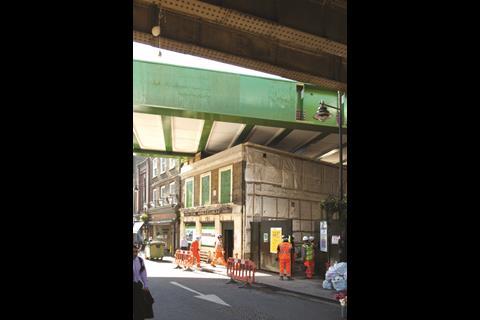


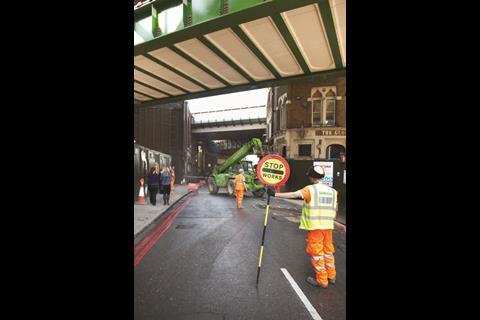
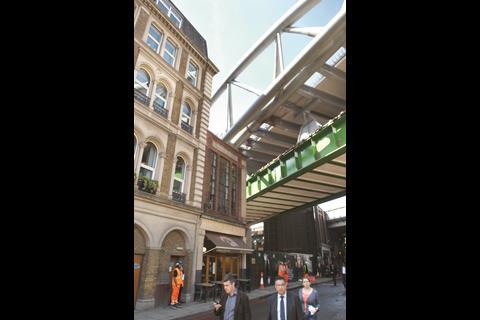
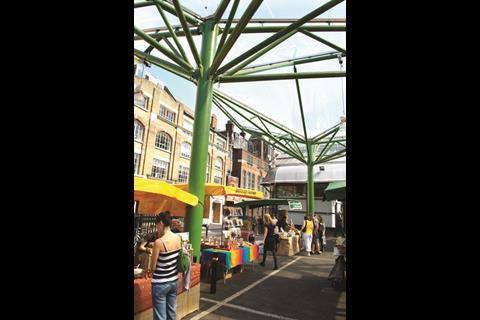
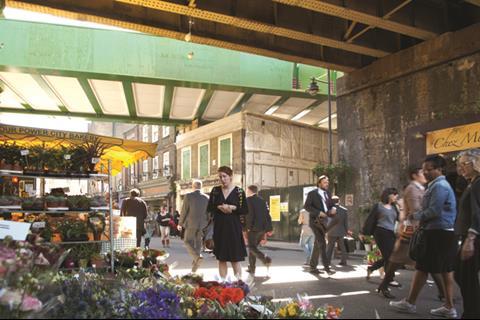
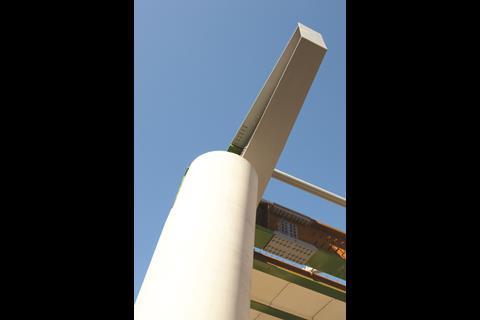
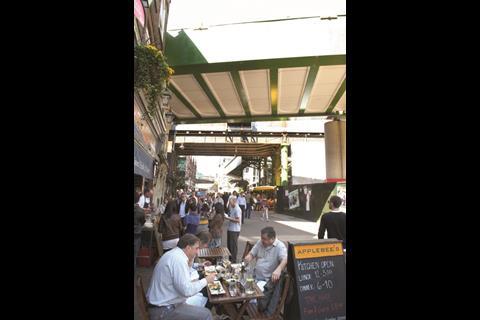








No comments yet